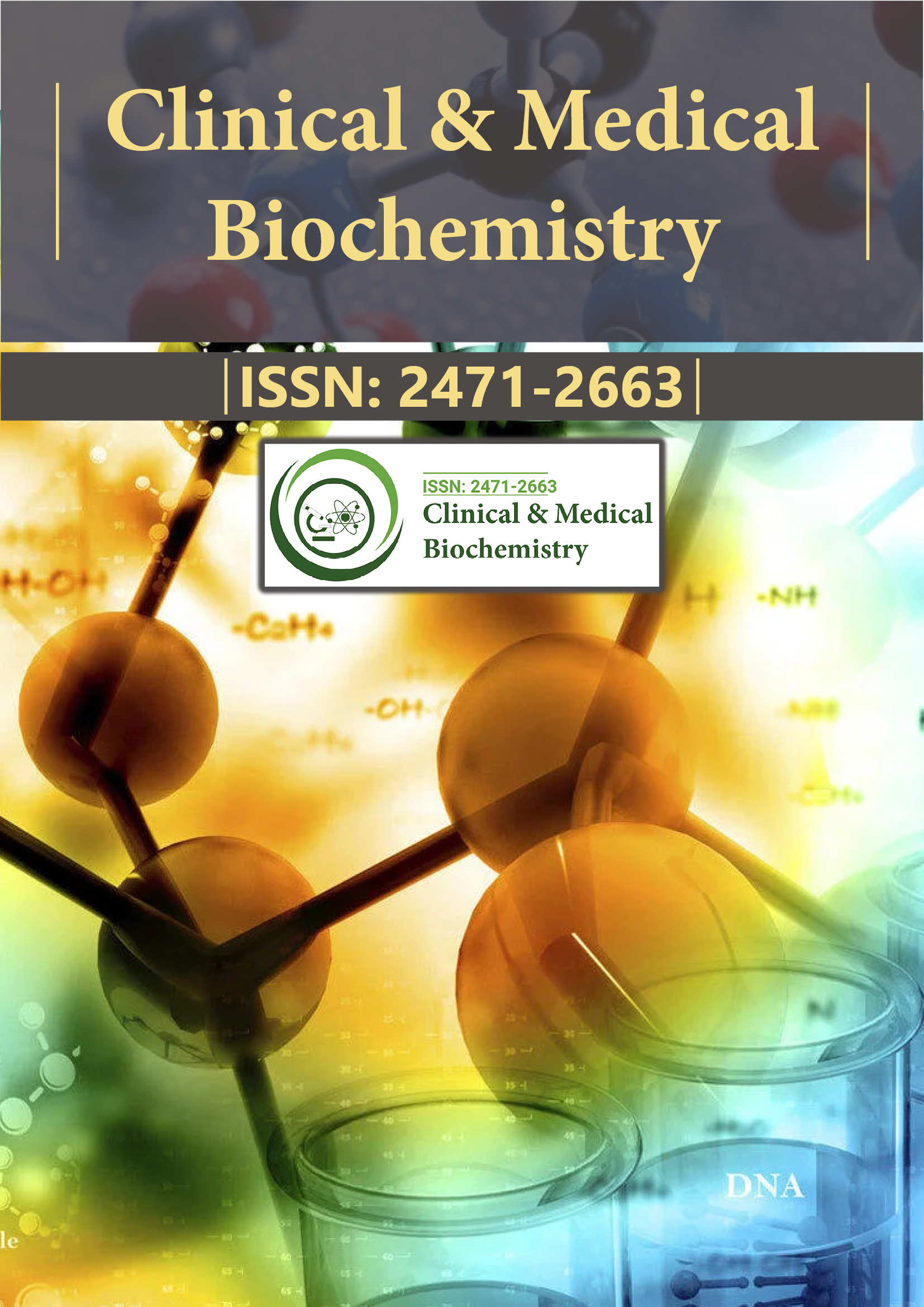ఇండెక్స్ చేయబడింది
- RefSeek
- రీసెర్చ్ జర్నల్ ఇండెక్సింగ్ డైరెక్టరీ (DRJI)
- హమ్దార్డ్ విశ్వవిద్యాలయం
- EBSCO AZ
- OCLC- వరల్డ్ క్యాట్
- విద్వాంసుడు
- పబ్లోన్స్
- యూరో పబ్
- గూగుల్ స్కాలర్
ఉపయోగకరమైన లింకులు
ఈ పేజీని భాగస్వామ్యం చేయండి
జర్నల్ ఫ్లైయర్

యాక్సెస్ జర్నల్స్ తెరవండి
- ఆహారం & పోషకాహారం
- ఇంజనీరింగ్
- ఇమ్యునాలజీ & మైక్రోబయాలజీ
- క్లినికల్ సైన్సెస్
- జనరల్ సైన్స్
- జెనెటిక్స్ & మాలిక్యులర్ బయాలజీ
- నర్సింగ్ & హెల్త్ కేర్
- న్యూరోసైన్స్ & సైకాలజీ
- పర్యావరణ శాస్త్రాలు
- ఫార్మాస్యూటికల్ సైన్సెస్
- బయోఇన్ఫర్మేటిక్స్ & సిస్టమ్స్ బయాలజీ
- బయోకెమిస్ట్రీ
- మెటీరియల్స్ సైన్స్
- మెడికల్ సైన్సెస్
- రసాయన శాస్త్రం
- వెటర్నరీ సైన్సెస్
- వ్యవసాయం మరియు ఆక్వాకల్చర్
- వ్యాపార నిర్వహణ
నైరూప్య
టెట్రాసల్ఫైడ్ వంతెన (TTSB) నిర్మాణం: HIV-1 యొక్క gp120 మాలిక్యూల్ యొక్క ఆర్కిటెక్చర్ మరియు డైనమిక్స్లో ఒక అసాధారణ ఇంటర్మీడియట్ నిర్మాణం
హ్యారీ F. క్రెవెకోయూర్
Gp120, CD4+ కణాలలో HIV వైరల్ ప్రవేశాన్ని అమలు చేసే అణువులలో ఒకటైన అనేక అలోస్టెరిక్ డైసల్ఫైడ్ వంతెనలు ఉన్నాయి. ఈ అధ్యయనంలో మేము 3-D కాన్ఫిగరేషన్ (క్రిస్టలోగ్రఫీ ఆధారంగా) మరియు వివిధ gp120 స్ఫటికాల యొక్క UNSW DBA విశ్లేషణలలో ఈ సంభావ్య డైసల్ఫైడ్ (డైసల్ఫైడ్) వంతెనల డైనమిక్లను అన్వేషిస్తాము. డేటా టెట్రాసల్ఫైడ్ (టెట్రాసల్ఫైడ్) వంతెన (TTSB) ఉనికిని వెల్లడిస్తుంది, ఇది డైసల్ఫైడ్ వంతెనతో కలిసి, రెండు లంబ బీటా షీట్లను (అవి V3 మరియు V4) gp120 నిర్మాణంలో సుమారుగా ఉంచుతుంది, అయితే అలోస్టెరిక్ మధ్య శక్తిని సురక్షితంగా బదిలీ చేస్తుంది. బంధాలు. బహుళ gp120 స్ఫటికాల విశ్లేషణలు స్థిరమైన మైలురాయికి విరుద్ధంగా TTSB యొక్క ఉనికిని మరింత ఇంటర్మీడియట్గా బహిర్గతం చేస్తాయి, ఇది కేవలం నిర్మాణాత్మక లక్షణాల కంటే చాలా క్లిష్టమైన విధులను సూచిస్తుంది. gp120 యొక్క వివిధ స్ఫటికాలలో, HIV-1 యొక్క వివిధ జాతులు మరియు క్లాడ్లలో గమనించిన ఈ TTSB, వివిధ రెండరింగ్ సాఫ్ట్వేర్ ద్వారా ప్రదర్శించబడుతుంది మరియు కొన్ని UNSW డైసల్ఫైడ్ బాండ్ అనాలిసిస్ (DBA) ఇంజిన్ ద్వారా గుర్తించబడతాయి, నివేదించబడ్డాయి మరియు వర్గీకరించబడతాయి. ఈ టెట్రాసల్ఫైడ్ వంతెన అలోస్టెరిక్ బాండ్ Cys296-Cys331ని Cys385-Cys418కి కలుపుతుంది, కొన్నిసార్లు CYS331:SG-CYS385:SG, మరియు కొన్నిసార్లు CYS331:SG-CYS418:SG. అంతేకాకుండా 3TIH, 4LSR మరియు 4R4N స్ఫటికాలలో, మేము TTSB యొక్క ఇంటర్మీడియట్ స్థితిని కూడా గమనించాము, ఇక్కడ సల్ఫర్ అణువు CYS331: SG CYS385:SG మరియు CYS418:SG రెండింటికీ బంధించే త్రిభుజాకార నిర్మాణాన్ని ప్రదర్శిస్తుంది, ఇది ఏకకాలంలో ముఖ్యమైన ఇంటర్మీడిని సూచిస్తుంది. యొక్క ఫంక్షనల్ డైనమిక్స్ gp120 అణువు. ఈ అసాధారణ నిర్మాణం (TTSB) యొక్క ఉనికి మల్టీఫంక్షనల్ డిజైన్ మరియు మెకానిక్స్లో కొన్ని చమత్కారమైన అంతర్దృష్టులతో పాటు gp120 అణువు యొక్క కొన్ని సంక్లిష్ట బలహీనతలను సూచిస్తుంది, ఇది యాంటీవైరల్ థెరపీకి కొత్త లక్ష్యాన్ని బహిర్గతం చేస్తుంది.